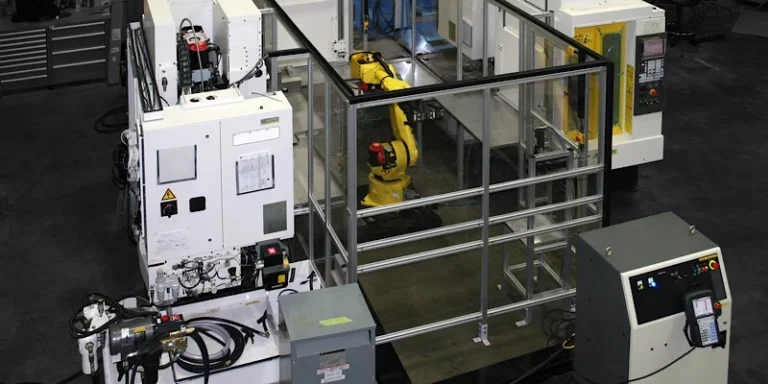New products and services are crucial for the vitality of any business, making investment in their development essential. However, this development process is inherently risky and demands extensive planning and organization. To manage schedules, resources, and costs effectively, it is vital to make well-informed investment and budget decisions at key stages of the product and service development process. Engineering prototype services play a pivotal role in this by transforming designs into tangible prototypes swiftly and efficiently, step by step.
1. Industrial Design
Industrial Design (ID) involves the creation of industrial products by integrating engineering, aesthetics, and economics. Every manufactured product emerges from a design process that can take various forms: it may be executed by individuals or teams, emphasize intuitive creativity or computational scientific decisions, and often incorporate both. This process is influenced by factors such as materials, production methods, business strategies, and prevailing social, commercial, or aesthetic trends.
Industrial designers are tasked with addressing issues related to shape, function, usability, physical ergonomics, marketing, brand development, sustainability, and sales. Their design solutions focus not only on the product’s appearance and quality but also on its functionality, manufacturability, and the overall value and experience it provides to users. Engineering prototype services are essential in bringing these designs to life, ensuring that they are practical and feasible.
The process of creating a product involves exploring multiple design concepts to ensure that the final design meets the needs of both the business and its future customers. Product design is a meticulous process that seeks to balance form, function, and business objectives. It begins with a series of quick thumbnail sketches to explore various ideas and solutions. Designers may produce up to 100 sketches, each presenting different concepts.
Narrowing down these ideas can be challenging. Computer modeling software is used to transform these concepts into interactive three-dimensional digital models. These 3D models evolve over time, providing the necessary data to build prototypes and manufacture products. Rapid prototyping or CAD models serve as references for appearance and functionality, linking to the engineering prototype system. After thorough review and refinement, the final design is confirmed.
2. Engineering Design Process
The design and construction of products involve transforming ideas into reality. While creating a new product design is one aspect, designing it to function effectively is another. Engineering capabilities encompass product design, mechanical and manufacturing design, 3D complex surfaces, material selection, processing challenges, and test fixture design and construction.
These capabilities also include finite element analysis, structural analysis, modal and thermal analysis, design optimization, DOE (design of experiments), and feasibility analysis for both design and manufacturing. We believe that engineering is invaluable at every stage of product development, and a well-executed engineering prototype can significantly contribute to a product’s success.

Most hardware development requires mechanical engineering to create prototypes. At AS Prototypes, our team has extensive experience in manufacturing mechanical products. Whether the designs are simple or complex, our engineers adhere to strict standards to ensure professional execution. They align your design with manufacturing specifications (DFM) to guarantee that all mass-produced parts function correctly and can be assembled efficiently on the production line.

Our team will design, implement, and test custom solutions tailored to your needs. We meticulously consider every detail during the product design process, focusing on functionality (ensuring the product works properly), feasibility (ensuring efficient production), and cost (managing expenses) to ensure that your project proceeds smoothly and efficiently.
3. Prototyping Process
Prototyping is a crucial phase in product development and one of the most important steps to ensure your product is designed correctly. It involves transforming your concepts and 3D CAD models into physical products that can serve various purposes, such as functional demonstrations. The prototyping process is invaluable because it allows you to test product features, manufacturing methods, and user experience before proceeding to full-scale production.
By understanding market needs and refining products accordingly, prototyping helps in developing products that meet and exceed customer expectations. The feedback and information gathered from prototype testing are essential for implementing and launching a successful product.
Evaluating the shape and function of a product is best done with a physical prototype. How does it look and feel compared to the 3D CAD model? If you’re ready to create a prototype to test your ideas, there are several methods to choose from, depending on the specific requirements of the prototype. We assess different criteria such as fidelity, speed, materials, structural integrity, and cost to select a prototyping method that meets the customer’s needs.
For high levels of complex details, methods like CNC machining, FDM (Fused Deposition Modeling), SLA (Stereolithography Apparatus), and SLS (Selective Laser Sintering) are commonly used. Other prototyping methods include traditional hand-made techniques, such as lathe machining, milling, thermoforming, and the manufacturing of silicone or polyurethane molds. Regardless of the process your prototype requires, AS Prototypes is committed to finding the best solution to bring your ideas to life.
4. Manufacturing Results

Manufacturing products is a critical step in bringing them to market. Once we reach a consensus with the customer, we provide a manufacturing design (DFM). DFM, or Design for Manufacturing, is the process of designing a product to simplify its manufacturing, ultimately aiming to create a better product at a lower cost. For both start-ups and large companies, optimizing manufacturing costs is essential. Key factors influencing these costs include the manufacturing method, material choices, assembly process, dimensional tolerance, labor, and more.
Does AS Prototypes Provide Quality Engineering Prototype Services?
Choosing a trusted and experienced partner is crucial for the proper and efficient execution of any project. At AS Prototypes, we offer top-notch engineering prototype services to inventors, entrepreneurs, start-ups, and large companies, helping them transform their creative designs into reality.
We build trust with our customers through our commitment to quality service and our ability to identify and address problems and failures. By pinpointing root causes and providing solutions via product design, material adjustments, and quality control, we ensure the success of your project. Our flexible development process allows you to develop innovative products for any industry, ensuring that your ideas come to life seamlessly.





